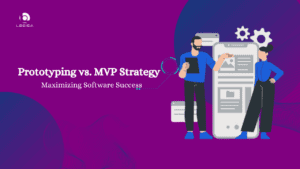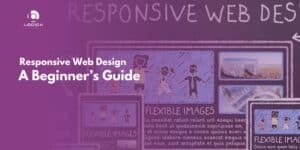User experience (UX) is an essential aspect of software design. It focuses on creating products that provide a positive and meaningful experience to the user. Good UX can make a software product more intuitive, easy to use, and enjoyable, leading to increased user satisfaction and engagement. By prioritizing user experience, software designers can create products that meet the needs and expectations of their users, resulting in increased adoption and customer loyalty.
Additionally, good UX can also improve productivity and efficiency, as users are able to navigate and use the software more easily. Overall, user experience is a critical factor in the success of any software product.
5 Importance of User Experience in Software Design
Improves user satisfaction and engagement
Good user experience (UX) can improve user satisfaction and engagement with the software. By designing software products with a focus on providing a positive and meaningful experience to the user, designers can create products that users enjoy using. This can lead to increased satisfaction and engagement with the software, as users are more likely to continue using it and recommend it to others.
Increases adoption and customer loyalty
Prioritizing UX can lead to increased adoption and customer loyalty. By creating software products with a strong focus on user experience, designers can make products that are more appealing to users. This can lead to increased adoption of the software, as users are more likely to choose it over competing products. Additionally, good UX can also lead to customer loyalty, as satisfied users are more likely to continue using the product and become loyal customers.
User-friendly and intuitive software
Improved UX can make a software product more intuitive and easier to use. Good UX design focuses on creating products that are easy to navigate and understand, with clear and intuitive user interfaces. This can make the software more user-friendly, allowing users to quickly and easily accomplish their goals. As a result, users are less likely to become frustrated or encounter obstacles when using the software, leading to a more enjoyable experience.
Increases useability and productivity
Good UX can enhance productivity and efficiency for users. When software is designed with a focus on user experience, it can be more efficient and effective for users. For example, a well-designed software product may include features such as shortcut keys or intuitive navigation that allow users to quickly accomplish their tasks. As a result, users can be more productive and efficient when using the software.
Helps you get ahead of competitors
User experience is a critical factor in the overall success of a software product. In today’s competitive market, software products must be able to meet the needs and expectations of their users in order to be successful. By prioritizing user experience, designers can create products that users find valuable and enjoyable, leading to increased adoption and customer loyalty. As a result, user experience is a crucial factor in the success of any software product.
Aspects involved in User Experience Design
There are several aspects involved in user experience (UX) design, including:
User research
This involves conducting research to understand the needs and expectations of the user, including their goals, motivations, and pain points. By understanding the user, designers can create products that are tailored to their needs.
User-centered design
This involves designing the product with the user in mind, rather than focusing solely on the functionality of the product. By creating products that are intuitive, easy to use, and enjoyable, designers can create a positive UX.
Testing and feedback
Before launching a product, designers should test it with real users to identify any potential UX pitfalls. This can involve usability testing, where users are asked to complete tasks using the product, and collecting feedback from users to identify areas for improvement.
Iteration and improvement
UX is not a one-time effort, but rather an ongoing process. By continuously gathering user feedback and iterating on the product, designers can ensure that the product continues to provide a positive experience to the user.
Accessibility
Designing for accessibility involves ensuring that the product is usable by users with disabilities, including those who use assistive technologies such as screen readers. By designing for accessibility, designers can improve UX for a wider audience.
Bad User Experience – It can ruin your product growth?
A bad user experience (UX) can have a negative impact on a product. When a product is difficult to use or provides a frustrating experience to the user, it can lead to decreased satisfaction and engagement with the product. This can result in users choosing to use competing products instead, leading to decreased adoption and customer loyalty. A bad UX can also lead to decreased productivity and efficiency. If a software product is difficult to navigate or use, it can hinder the user’s ability to accomplish their tasks quickly and easily. This can lead to frustration and decreased productivity, as users may struggle to use the product effectively.
When users have a negative experience with a product, they are likely to share their dissatisfaction with others. This can lead to negative word-of-mouth and damaging reviews, which can negatively impact a company’s reputation. Overall, bad UX can have a significant negative impact on a product, leading to decreased satisfaction, adoption, and productivity, as well as damaging a company’s reputation.
4 Ways to Improve User Experience
To avoid user experience (UX) pitfalls, designers should focus on creating products that provide a positive and meaningful experience to the user. This can involve several steps like:
Conducting user research
To understand the needs and expectations of the target audience user research is important. By understanding the user’s goals, motivations, and pain points, designers can create products that are tailored to their needs.
Designing a user-centered product
This involves designing the product with the user in mind, rather than focusing solely on the functionality of the product. By creating products that are intuitive, easy to use, and enjoyable, designers can avoid creating products that are difficult or frustrating for users.
Testing the product with real users
Before launching a product, designers should test it with real users to identify any potential UX pitfalls. This can involve usability testing, where users are asked to complete tasks using the product, and collecting feedback from users to identify any areas for improvement.
Continuously iterating and improving the product
UX is not a one-time effort, but rather an ongoing process. By continuously gathering user feedback and iterating on the product, designers can ensure that the product continues to provide a positive experience to the user.
Summary
- ● User experience (UX) is an essential aspect of software design, focusing on creating products that provide a positive and meaningful experience to the user.
- ● Good UX can improve user satisfaction and engagement, leading to increased adoption and customer loyalty.
- ● UX design involves conducting user research to understand the needs and expectations of the user, designing a user-centered product, testing and gathering feedback, iterating and improving, and designing for accessibility.
- ● Bad UX can have a negative impact on a product, including decreased satisfaction and adoption, decreased productivity and efficiency, and damaging a company’s reputation.
- ● To avoid UX pitfalls, designers should conduct user research, design a user-centered product, test the product with real users, and continuously iterate and improve.
- ● To improve UX in software design, designers should focus on the needs and expectations of the user, create user-centered products, test and gather feedback, iterate and improve, and design for accessibility.











